Abstract
1. Development of a new thermal probe and use in conjunction with chemical analysis of needle biopsy samples, has made possible a thermodynamic study of the energetics of muscular contraction in the human quadriceps. 2. The observed rate of muscle temperature rise was proportional to the force of the contraction. During maximal contractions the rate of heat production was 54 +/-8-5 W/kg wet muscle (mean +/- s.d.). 3. The observed rates of muscle temperature rise agreed well with the rates calculated from the measured metabolite changes when standard values for the enthalpy changes of the reactions involved were used. 4. During prolonged stimulation of the quadriceps at 15/sec via the femoral nerve, the rate of heat production per unit force fell to nearly half the initial value. It is estimated that this represented a two- to fourfold increased in economy of ATP turn-over required to maintain a given force. 5. Relaxation becomes progressively slower during prolonged contractions and it is suggested that the slowing of relaxation and the increased economy of force maintenance may both be due to an increased cross-bridge cycle time in the fatigued muscle.
Full text
PDF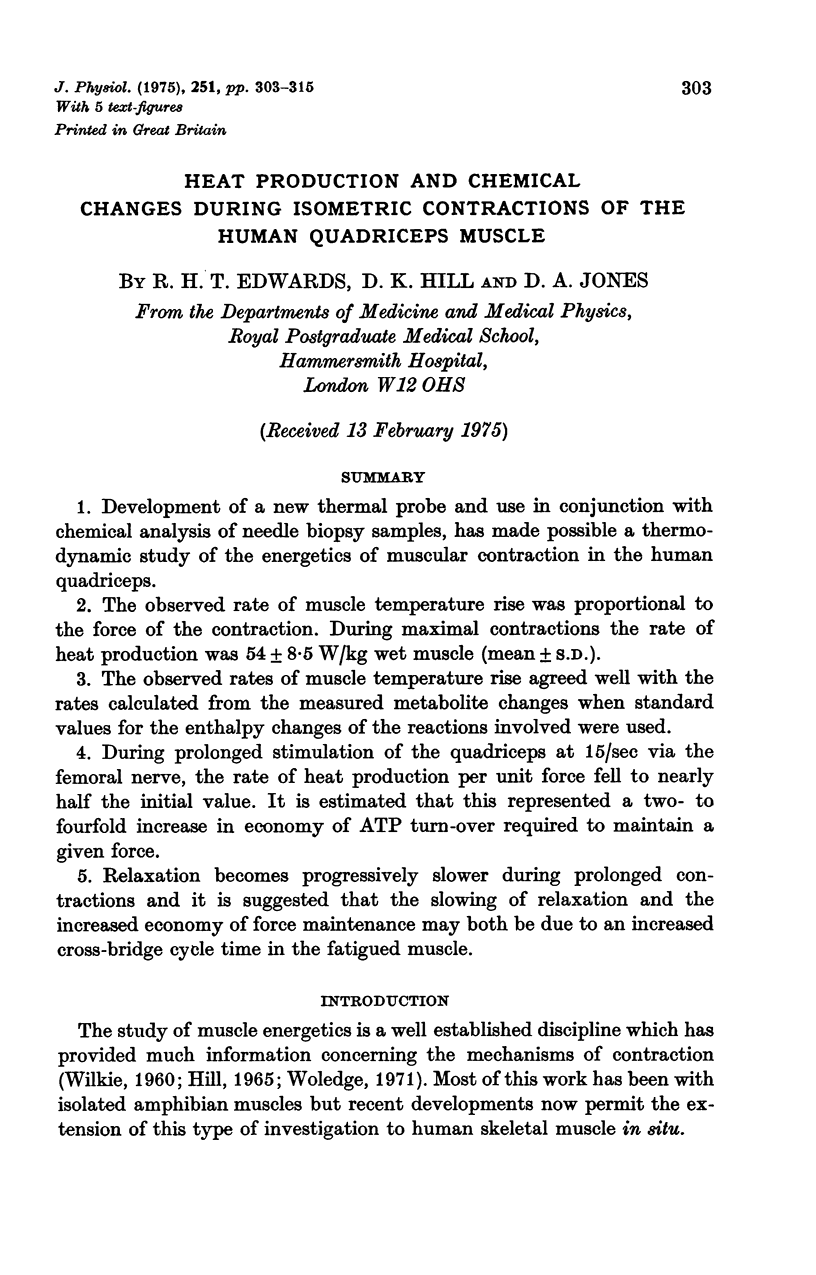
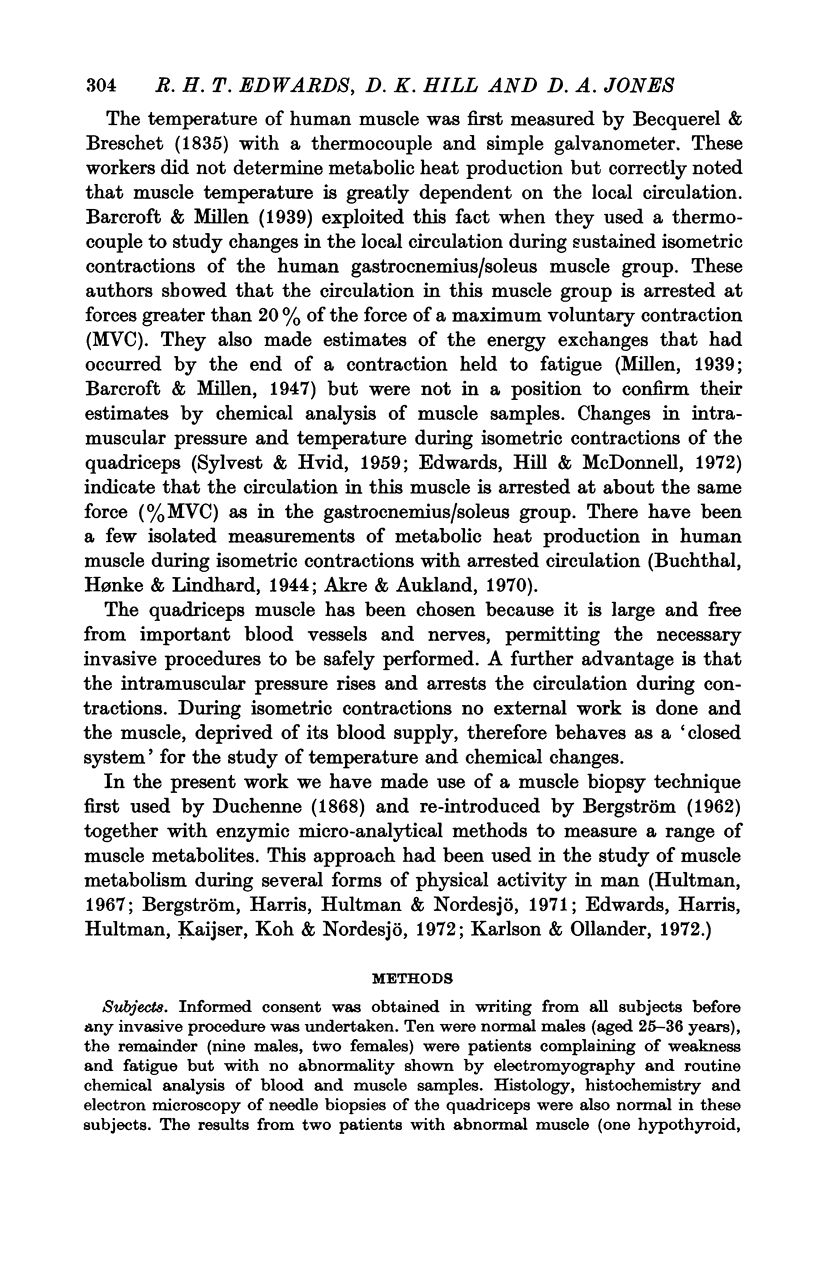
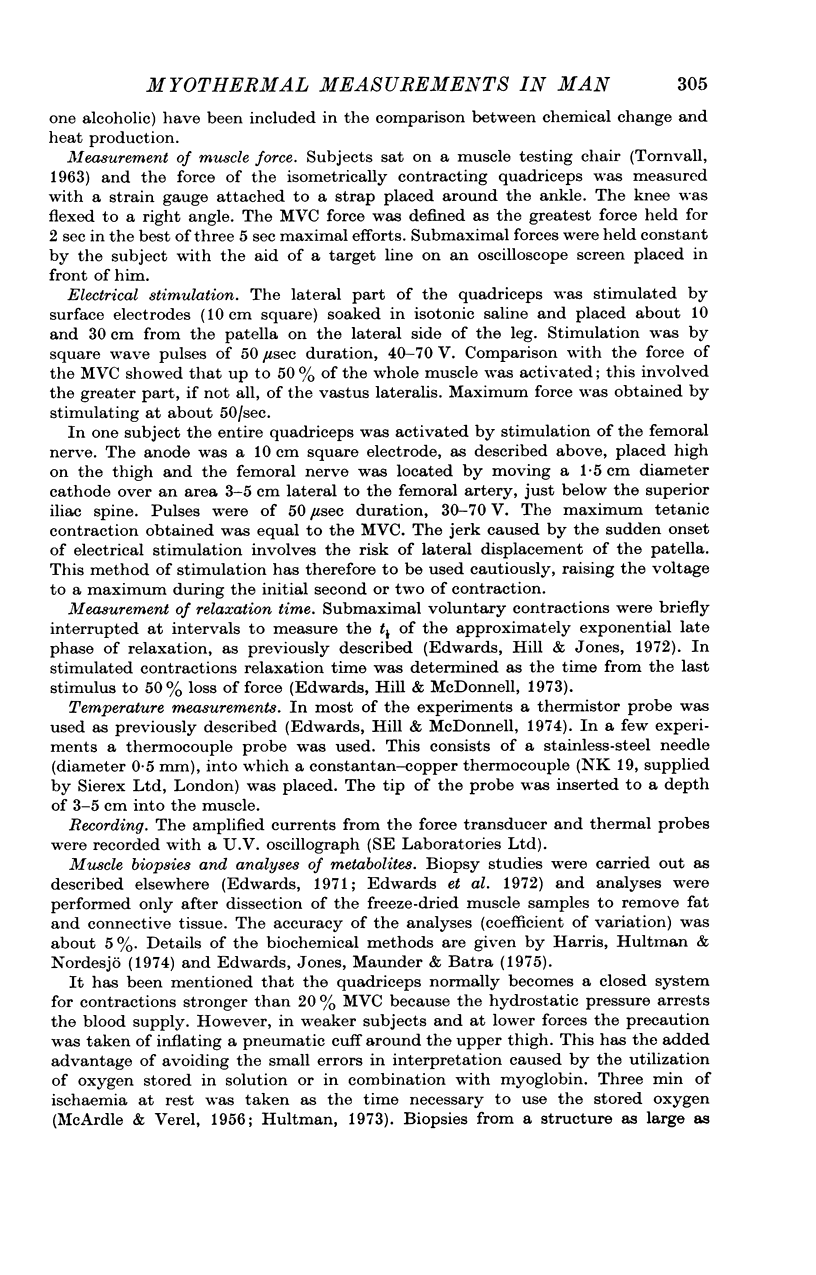
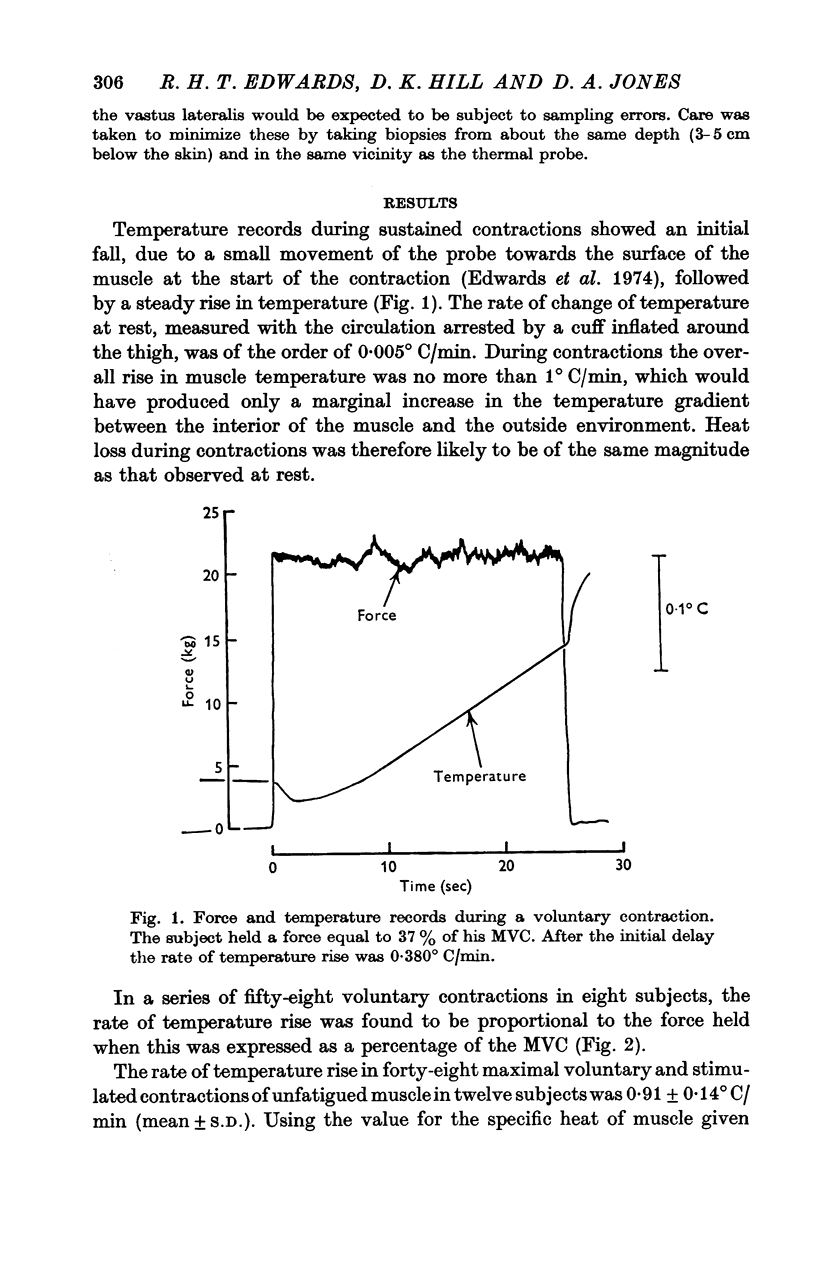
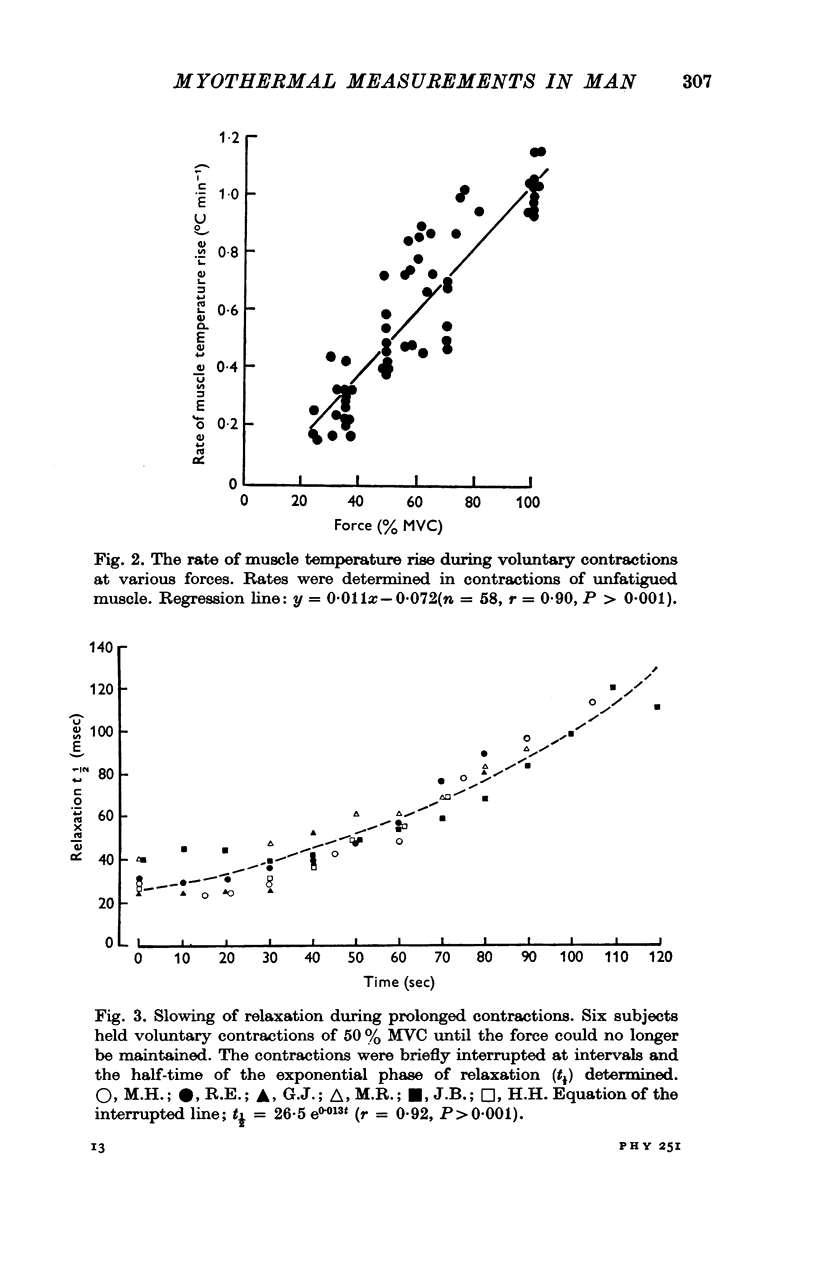
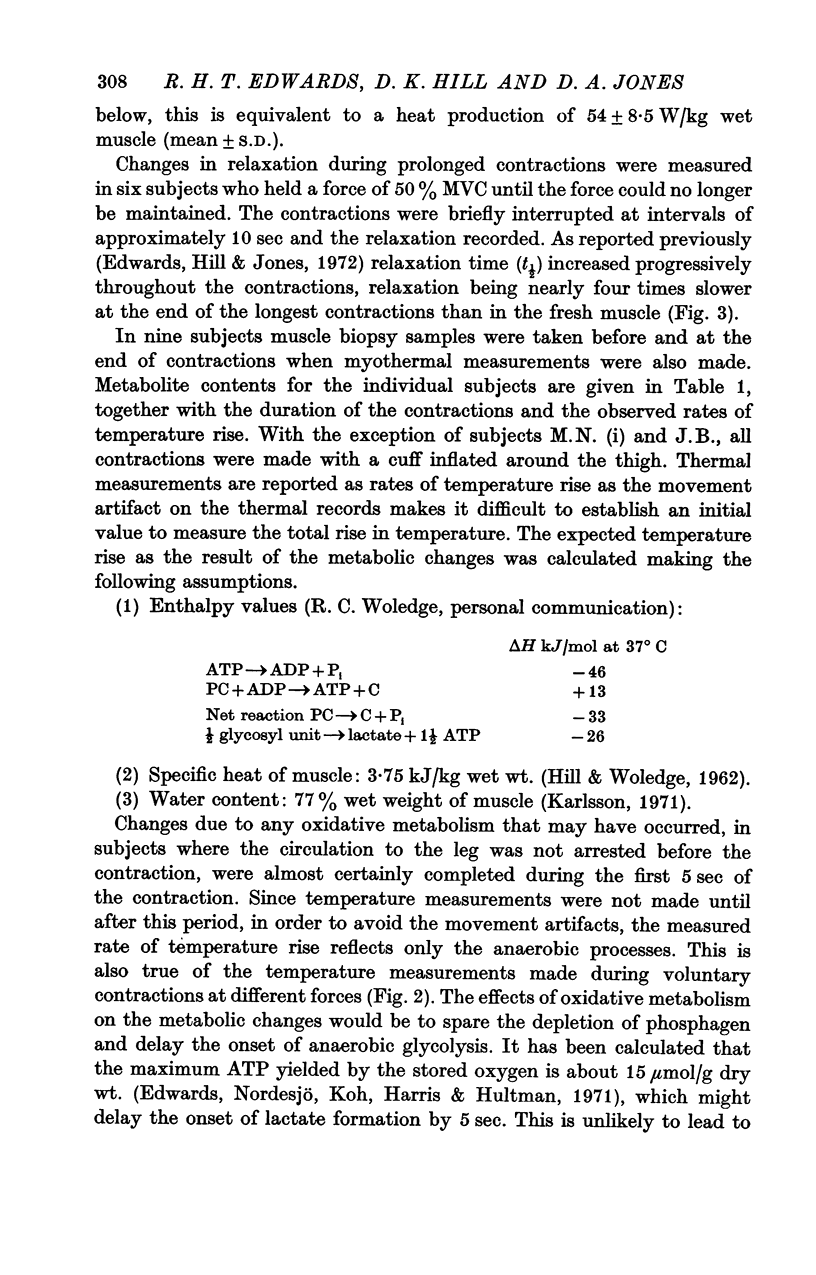
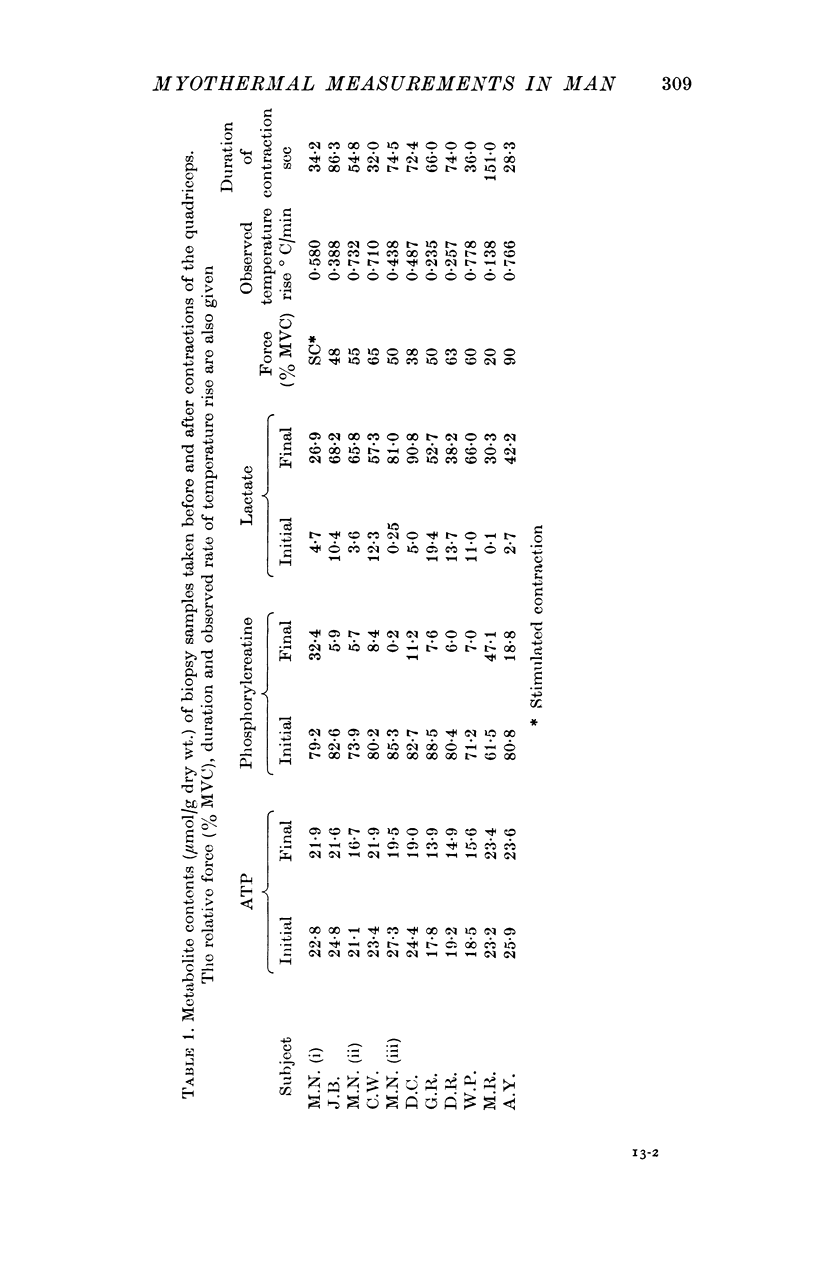
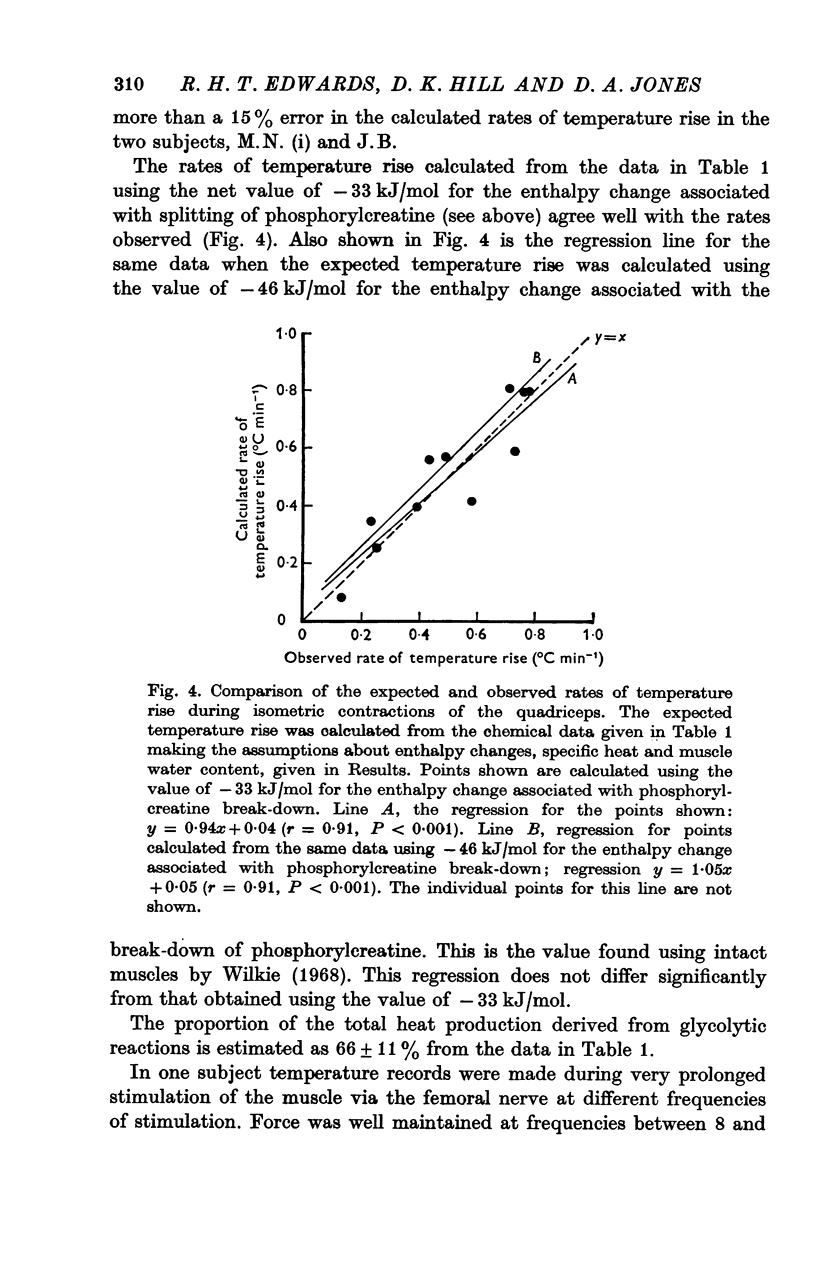
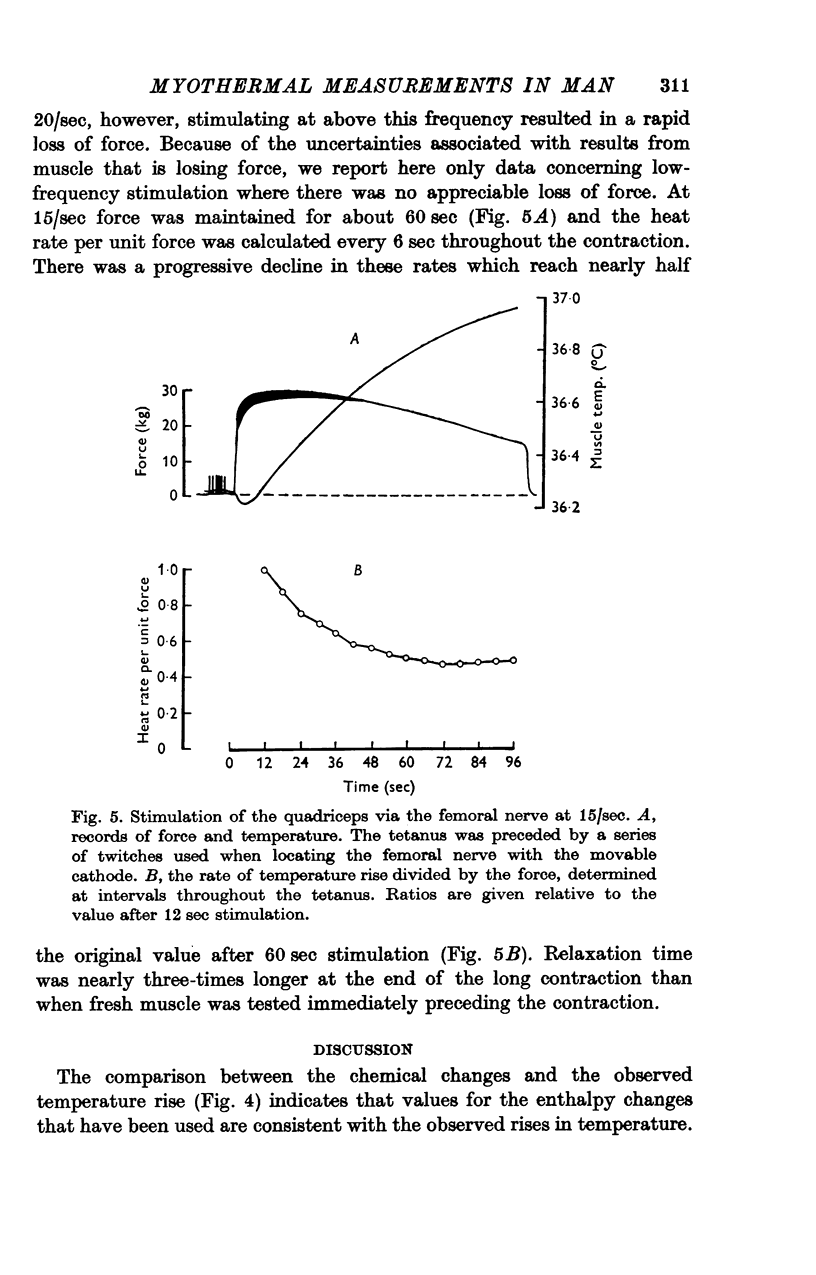
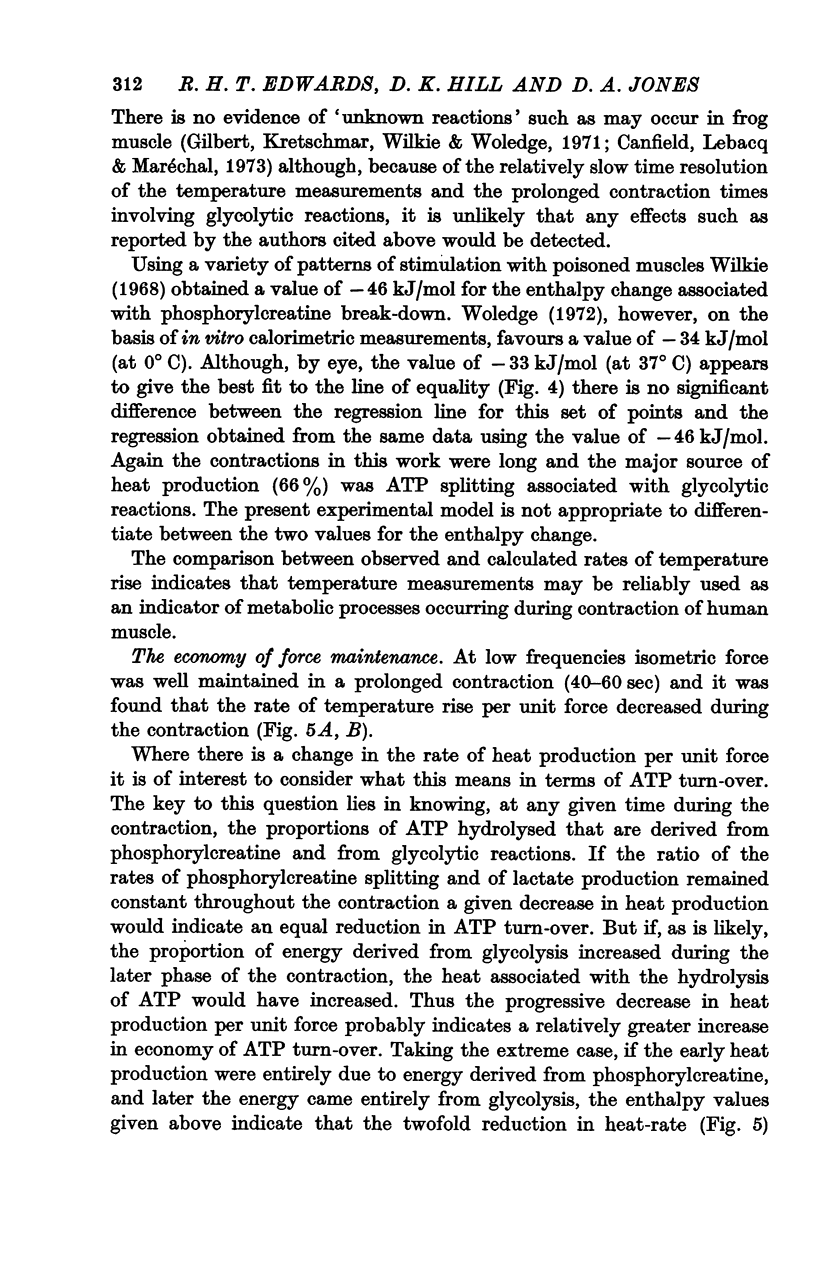
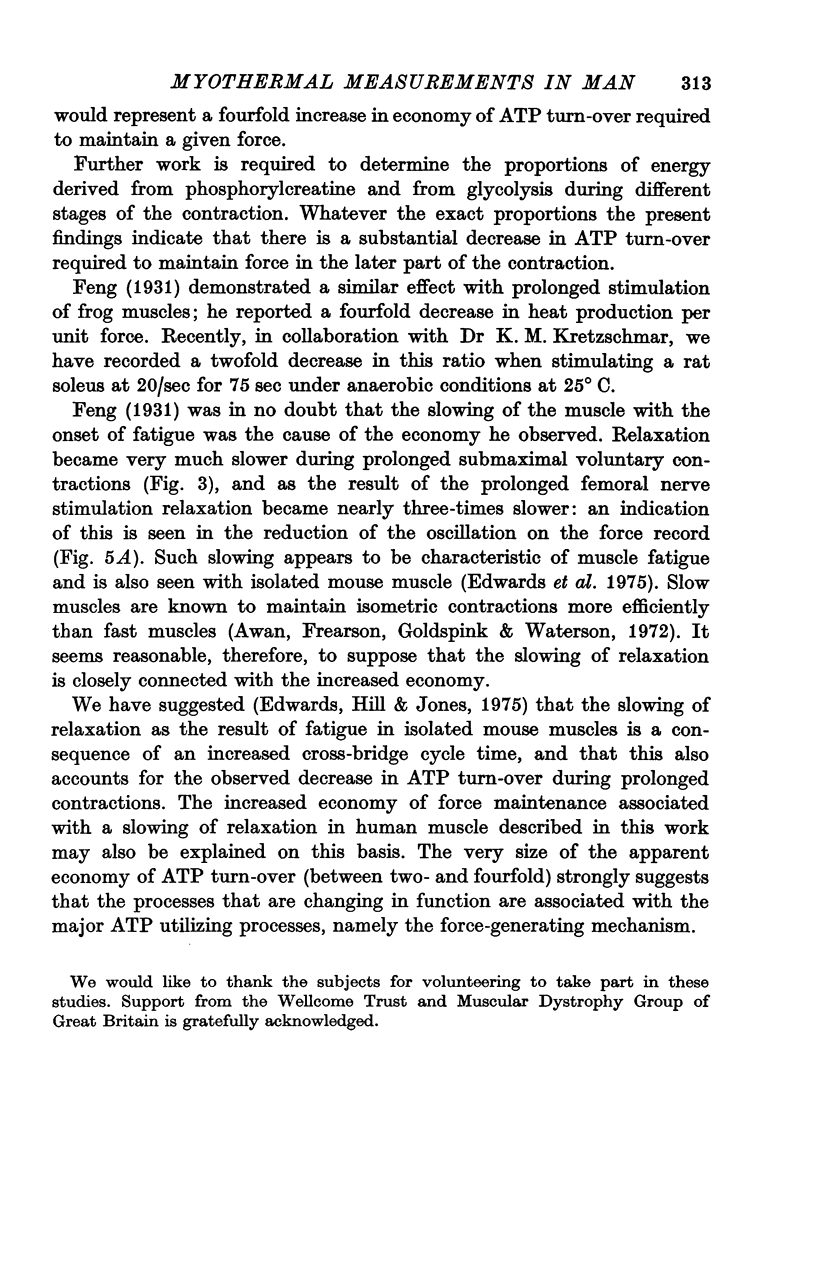

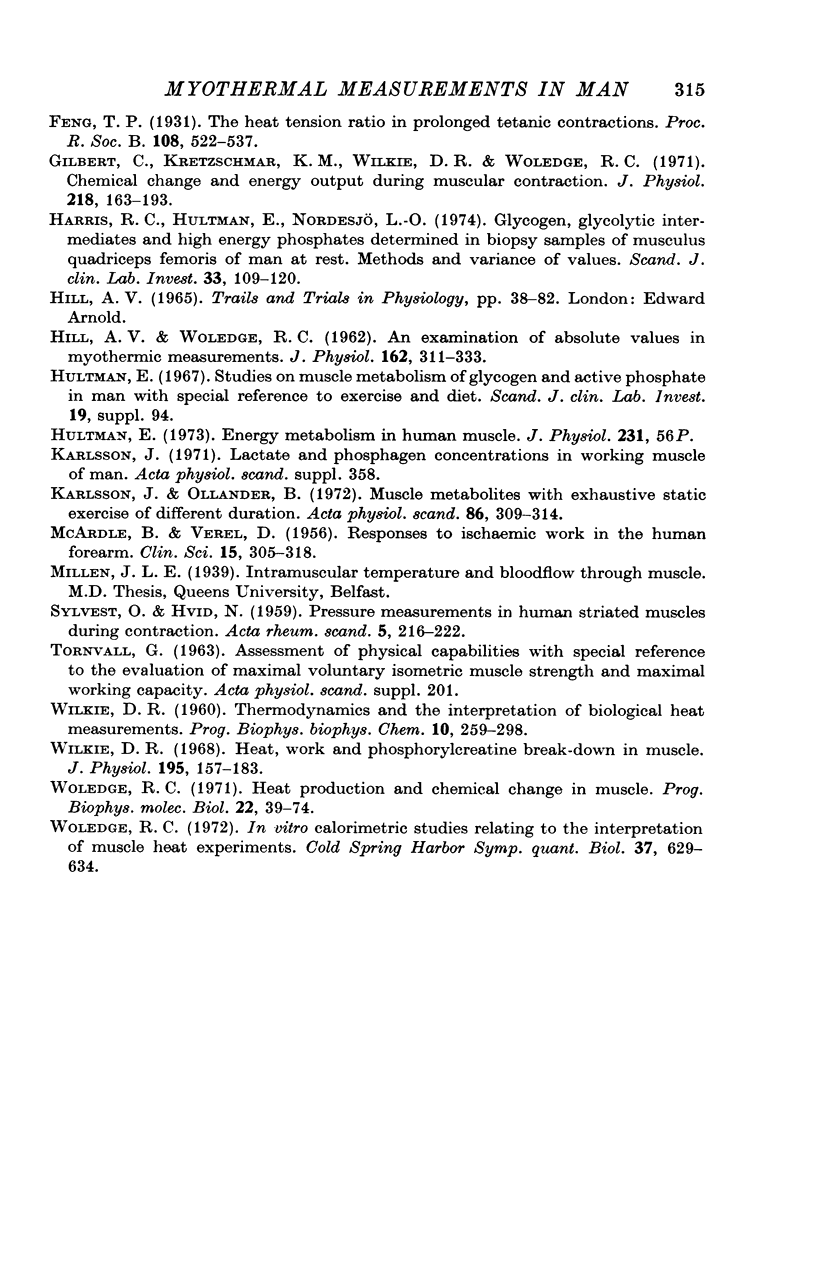
Selected References
These references are in PubMed. This may not be the complete list of references from this article.
- Awan M. Z., Frearson N., Goldspink G., Waterson S. E. Biochemical efficiency of smooth muscle and different types of striated muscle. J Mechanochem Cell Motil. 1972 Dec;1(4):225–232. [PubMed] [Google Scholar]
- Barcroft H., Millen J. L. The blood flow through muscle during sustained contraction. J Physiol. 1939 Nov 14;97(1):17–31. doi: 10.1113/jphysiol.1939.sp003789. [DOI] [PMC free article] [PubMed] [Google Scholar]
- Canfield P., Lebacq J., MARECHAL G. Energy balance in frog sartorius muscle during an isometric tetanus at 20 degrees C. J Physiol. 1973 Aug;232(3):467–483. doi: 10.1113/jphysiol.1973.sp010281. [DOI] [PMC free article] [PubMed] [Google Scholar]
- Edwards R. H., Harris R. C., Hultman E., Kaijser L., Koh D., Nordesjö L. O. Effect of temperature on muscle energy metabolism and endurance during successive isometric contractions, sustained to fatigue, of the quadriceps muscle in man. J Physiol. 1972 Jan;220(2):335–352. doi: 10.1113/jphysiol.1972.sp009710. [DOI] [PMC free article] [PubMed] [Google Scholar]
- Edwards R. H., Hill D. K., Jones D. A. Effect of fatigue on the time course of relaxation from isometric contractions of skeletal muscle in man. J Physiol. 1972 Dec;227(2):26P–27P. [PubMed] [Google Scholar]
- Edwards R. H., Hill D. K., Jones D. A. Metabolic changes associated with the slowing of relaxation in fatigued mouse muscle. J Physiol. 1975 Oct;251(2):287–301. doi: 10.1113/jphysiol.1975.sp011093. [DOI] [PMC free article] [PubMed] [Google Scholar]
- Edwards R. H., Hill D. K., McDonnell M. Metabolic heat production and relaxation rate of electrically stimulated contractions of the quadriceps muscle in man. J Physiol. 1973 Jun;231(2):81P–83P. [PubMed] [Google Scholar]
- Edwards R. H., Hill D. K., McDonnell M. Myothermal and intramuscular pressure measurements during isometric contractions of the human quadriceps muscle. J Physiol. 1972 Jul;224(2):58P–59P. [PubMed] [Google Scholar]
- Edwards R. H., Jones D. A., Maunder C., Batra G. J. Needle biopsy for muscle chemistry. Lancet. 1975 Mar 29;1(7909):736–740. doi: 10.1016/s0140-6736(75)91642-6. [DOI] [PubMed] [Google Scholar]
- Edwards R. H., McDonnell M. J., Hill D. K. A thermistor probe for myothermal measurements in man. J Appl Physiol. 1974 Apr;36(4):511–513. doi: 10.1152/jappl.1974.36.4.511. [DOI] [PubMed] [Google Scholar]
- Edwards R. H. Percutaneous needle-biopsy of skeletal muscle in diagnosis and research. Lancet. 1971 Sep 11;2(7724):593–595. doi: 10.1016/s0140-6736(71)92165-9. [DOI] [PubMed] [Google Scholar]
- Gilbert C., Kretzschmar K. M., Wilkie D. R., Woledge R. C. Chemical change and energy output during muscular contraction. J Physiol. 1971 Oct;218(1):163–193. doi: 10.1113/jphysiol.1971.sp009609. [DOI] [PMC free article] [PubMed] [Google Scholar]
- HILL A. V., WOLEDGE R. C. An examination of absolute values in myothermic measurements. J Physiol. 1962 Jul;162:311–333. doi: 10.1113/jphysiol.1962.sp006935. [DOI] [PMC free article] [PubMed] [Google Scholar]
- Harris R. C., Hultman E., Nordesjö L. O. Glycogen, glycolytic intermediates and high-energy phosphates determined in biopsy samples of musculus quadriceps femoris of man at rest. Methods and variance of values. Scand J Clin Lab Invest. 1974 Apr;33(2):109–120. [PubMed] [Google Scholar]
- Hultman E. Energy metabolism in human muscle. J Physiol. 1973 Jun;231(2):56P–56P. [PubMed] [Google Scholar]
- Karlsson J., Ollander B. Muscle metabolites with exhaustive static exercise of different duration. Acta Physiol Scand. 1972 Nov;86(3):309–314. doi: 10.1111/j.1748-1716.1972.tb05337.x. [DOI] [PubMed] [Google Scholar]
- MCARDLE B., VEREL D. Responses to ischaemic work in the human forearm. Clin Sci. 1956 May;15(2):305–318. [PubMed] [Google Scholar]
- SYLVEST O., HVID N. Pressure measurements in human striated muscles during contraction. Acta Rheumatol Scand. 1959;5:216–222. doi: 10.3109/rhe1.1959.5.issue-1-4.26. [DOI] [PubMed] [Google Scholar]
- WILKIE D. R. Thermodynamics and the interpretation of biological heat measurements. Prog Biophys Mol Biol. 1960;10:259–298. [PubMed] [Google Scholar]
- Wilkie D. R. Heat work and phosphorylcreatine break-down in muscle. J Physiol. 1968 Mar;195(1):157–183. doi: 10.1113/jphysiol.1968.sp008453. [DOI] [PMC free article] [PubMed] [Google Scholar]


